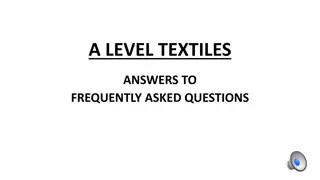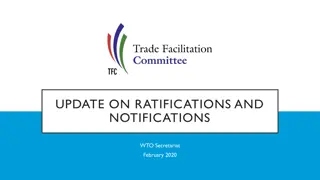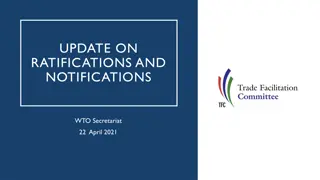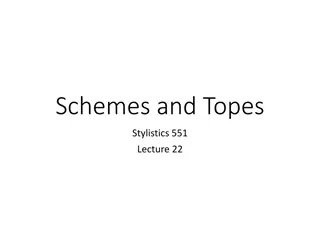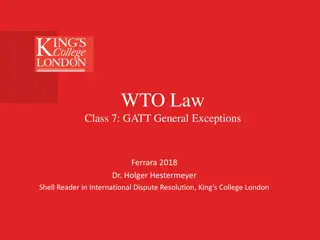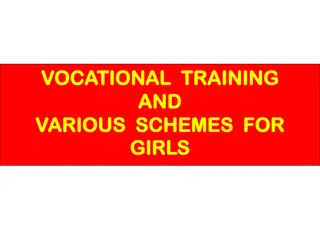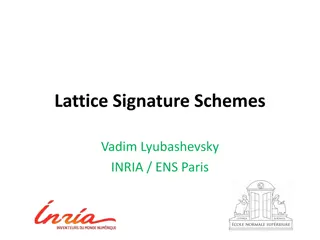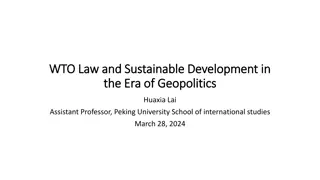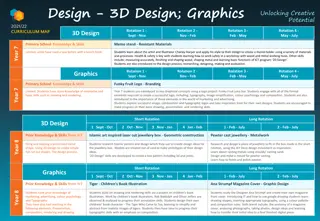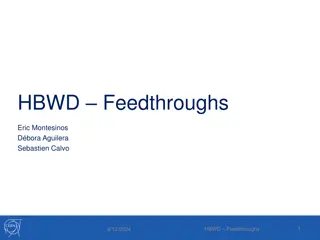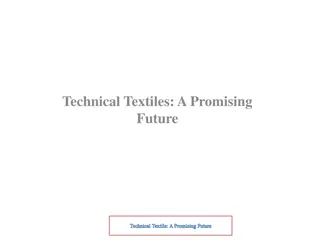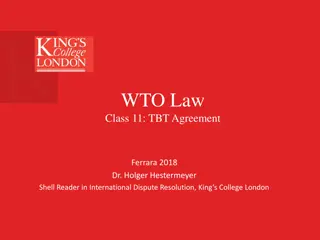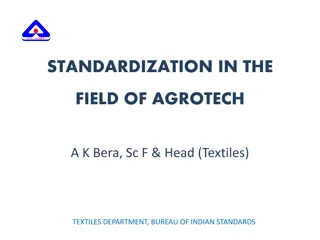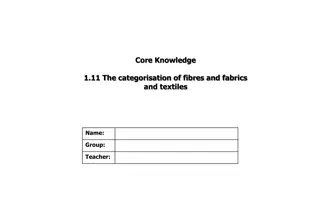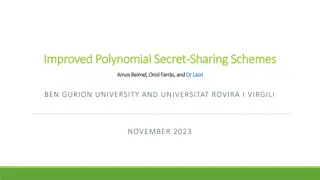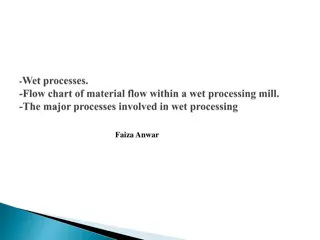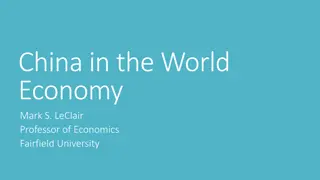Overview of WTO-Compliant Schemes for Textiles Sector
This presentation by Jayant Dasgupta, Executive Partner, discusses WTO-compliant schemes in the textiles sector, covering definitions of subsidies, permissible subsidies, prohibited subsidies, and the phase-out of export subsidies by developing countries. It also addresses the current status of Indian export subsidies. The content explains actionable and non-actionable subsidies, restrictions on certain subsidy types, and criteria for phasing out export subsidies.
Download Presentation

Please find below an Image/Link to download the presentation.
The content on the website is provided AS IS for your information and personal use only. It may not be sold, licensed, or shared on other websites without obtaining consent from the author.If you encounter any issues during the download, it is possible that the publisher has removed the file from their server.
You are allowed to download the files provided on this website for personal or commercial use, subject to the condition that they are used lawfully. All files are the property of their respective owners.
The content on the website is provided AS IS for your information and personal use only. It may not be sold, licensed, or shared on other websites without obtaining consent from the author.
E N D
Presentation Transcript
WTO Compliant Schemes for the Textiles Sector A Presentation by Jayant Dasgupta Executive Partner
WTO Definition of Subsidies Financial contribution by the government or any public body Direct or potential direct transfer of funds Government revenue foregone or not collected Government provides goods or services other than general infrastructure, or purchase of goods Government makes payments to a funding mechanism Any form of income or price support Must result in a BENEFIT CONFERRED
WTO Permissible Subsidies ACTIONABLE NON-ACTIONABLE: (a) Subsidies which are NOT SPECIFIC, i.e. not available only to an enterprise or industry or group of enterprises or industries, (b) Assistance for research activities, (c) Assistance to disadvantaged regions, (d) Assistance for adaptation to new environmental requirements
Prohibited Subsidies- WTO SUBSIDIES CONTINGENT UPON EXPORT PERFORMANCE, i.e tied to actual or anticipated exportation or export earnings* SUBSIDIES CONTINGENT UPON USE OF DOMESTIC OVER IMPORTED GOODS *Developing countries are exempted if: (a) they are LDCs or (ii) their annual per capita income is less than US$ 1000
Phase out of Export Subsidies by Developing Countries If a developing country attains EXPORT COMPETITIVENESS in a product, i.e. a share of at least 3.25% in world trade in that product for two consecutive calendar years, export subsidies in that product will have to be phased out over a period of 8 years. A product is defined as a SECTION HEADING of the ITC HS system. Export competitiveness could be declared by a Member through filing its schedules or computed by the Secretariat at the request of any Member.
Present status of Indian Export Subsidies For Section XI, India has attained export competitiveness in 2006 and 2007, though it did not notify it The US asserted in 2011 that India had attained export competitiveness in the textiles and clothing sector and requested the Secretariat to compute India s share in global trade The WTO Secretariat s calculations showed that India had crossed 3.25% for two consecutive calendar years 2010 and 2011 for Section XI In the ITC HS nomenclature, there are SECTIONS (e.g. Section XI dealing with all textile and clothing products in Chapters 50 to 63), CHAPTERS or TARIFF HEADINGS (at 4 digit level) India sought a clarification on the interpretation of Section Heading . For a large number of Cotton Based Tariff Headings, India has crossed 3.25%, though not for some Non-Cotton Tariff Headings India will perhaps have to phase out its export subsidies by 2018 or face dispute action.
WTO Compliant Schemes-some suggestions During the phase-out period, a developing country is not expected to introduce new schemes or increase the quantum of export subsidies. By amalgamating five existing export subsidy schemes, India has just announced the Merchandise Exports from India Scheme (MEIS), which can be considered to be a re-designation of old schemes and thus can continue till 2018. Existing Schemes such as EPCG (duty foregone for future exports) are likely to come under attack after 2018 being a prohibited export subsidy. (RRTUFS to be phased out by 2017 according to guidelines). Any new schemes would have to be either general (and not specific) or come under one of the exceptions (research/disadvantaged regions/environmental adaptation)for not being countervailed. Specific subsidies are actionable subsidies and are likely to be countervailed, thus eroding any advantage for our exporters in the importing country.


